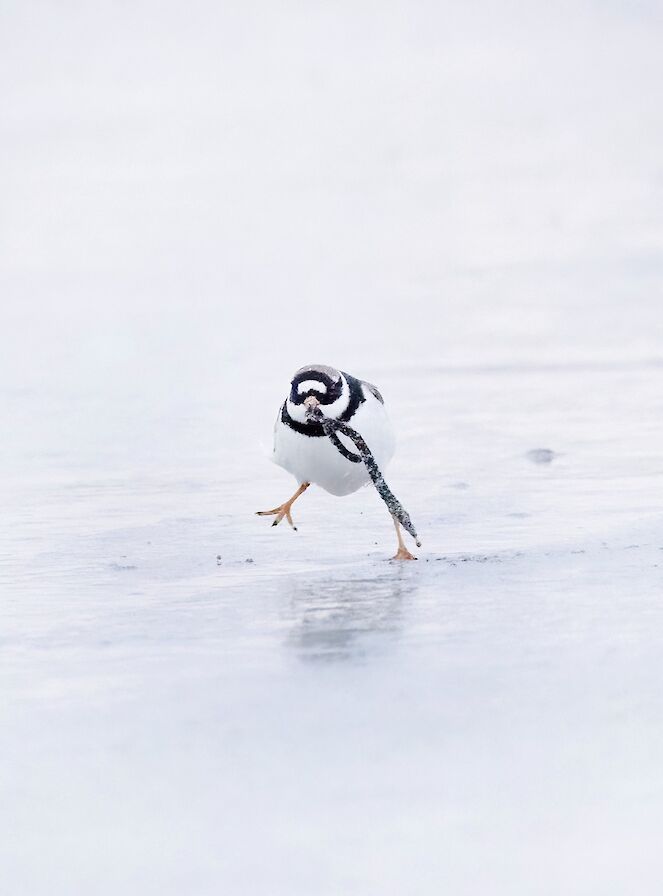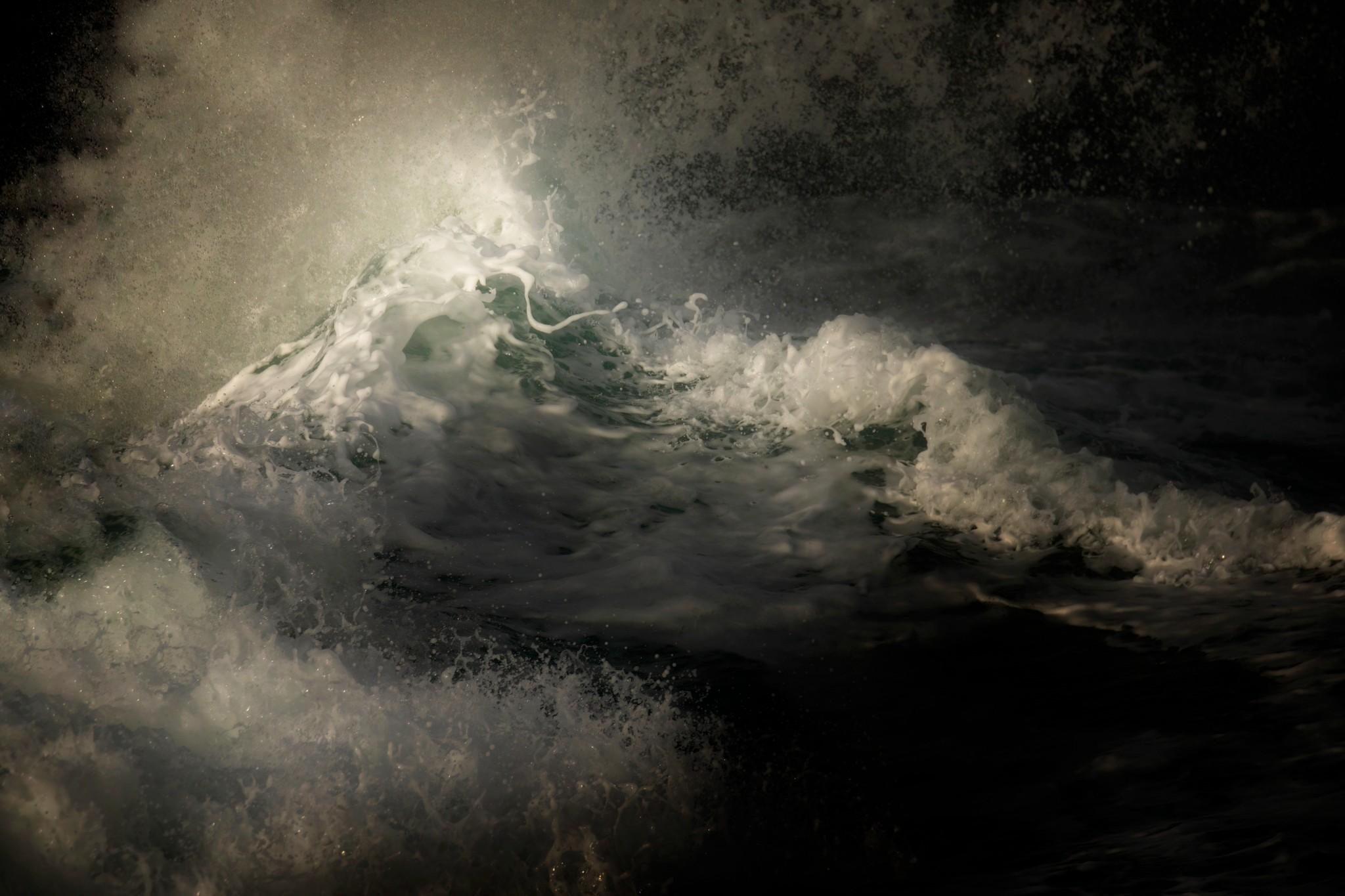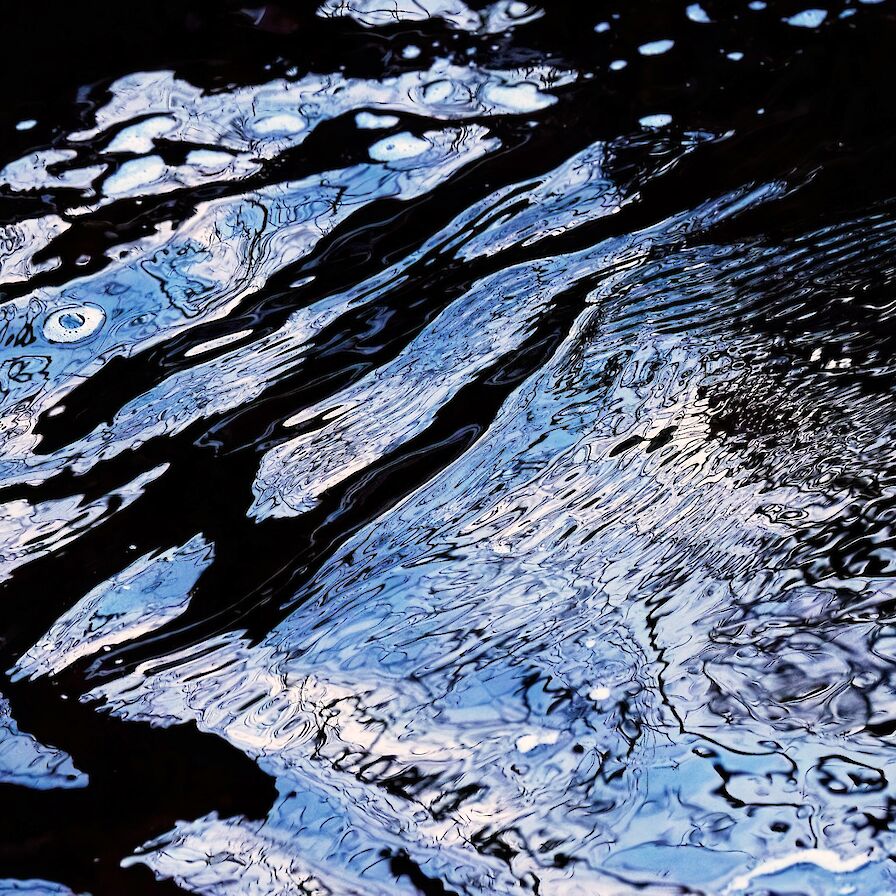For Orkney, winter is the great darkness of the year; storms gather under brooding skies and at the solstice we are gifted daylight hours of not much more than six hours.
But this is the time of year when the light can be at its most spectacular; as the sun traces its low arc just above the horizon it creates the deepest shadows, and colours become saturated and incandescent, fitting for marking the beginning of light out of darkness that many cultures celebrate. In winter I love to spend time at the Churchill Barriers and there is always plenty to photograph; on calmer days the embers of the dying light illuminate the cresting waves, an alchemical miracle turning them to molten metal.
Colours look so fine as the sun sinks lower in the sky, and long-tailed ducks are bathed in a sea of pink, chatting amongst themselves, their off-key major triads filling the air.
Roving gangs of mixed shorebirds, like tiny liminal wind-up toys, somehow coexist on the seaweed-strewn beach, a motley crew on sand that promises a tasty meal. A passing dog sends them up, wheeling from one end of the beach to the other until they see that the danger has passed, and they can once more resume their search for those delicious worms. I am always moved by these miraculous little birds - to watch them frantically feeding on a freezing January afternoon is to marvel at their resilience and courage.
Dusk falls and the little waders gather in large flocks as they prepare to roost for the night - safety in numbers - the sound of their softly beating wings reminding me of swishing silk.
Snow and ice can make for great photographic opportunities, so I am excited to wake up one day to a winter wonderland. I venture out as soon as the sun breaks through and there is the promise of sparkles…who doesn’t love a fairy light or several, after all. I find a patch of grasses near my home and lie in the snow, manually focussing my lens until I find what I am looking for. I decide to play with multiple exposures as well, trying to conjure an otherworldly dreamscape.
During northerly gales I head to Birsay, hoping for mountainous seas. I hunker down in a favourite spot, and as hail and sleet sting my face in cruel squalls and I fight to hold the camera steady, I wait for the all too brief moments when the union of sun and storm gives me my favourite winter light. It is a visceral, awe-inspiring experience of great beauty, but it is harsh - the bodies of many young seals and seabirds are washed ashore at this time of year, the fierce conditions proving too much, even for those built for a life at sea.
Northside, and the fulmars are relishing the stormy weather. Evolved to thrive in high wind, they soar through Longaglebe Geo at breakneck speed, displaying an arial mastery that would be the envy of any top gun pilot. But even fulmars must land occasionally, and as I catch a passing shower, I see that a resting bird has been backlit by the sun and is surrounded by golden raindrops. A fulmar in wonderland.
At Yesnaby, where the mighty North Atlantic thunders into land for the first time in 3000 miles, the sea slams so hard into the cliffs that I feel the vibrations deep in my chest. I wait for a propitious swell forecast and hope for good light, as this is when the waves appear lit from within, and my world is painted with jewel-like brilliance. The magic is strong. I know a special place to sit; as I make my way gingerly down, I must be careful to avoid rocks slippery as sheet ice, but it is an exhilarating experience. I return to the car, soaked by the constant spray but happy - eager to discover what secrets the sea may have revealed to me.
I visit Happy Valley during one of the recent icy spells, hoping to find icicles under the little bridge. There are none, although there is plenty of snow and ice, but as I stand watching the swirling water I notice that some beautiful patterns are being created. However, it is not until I get home and examine my pictures more closely that I discover all manner of assorted monsters and creatures staring back at me! How many can you see?
As the days gradually begin to lengthen, I scour Binscarth Wood, steeped in mud and silent, impatient for first signs of the snowdrops that will defy the frozen ground, and when eventually the huge skies echo with the sound of geese heading off to their arctic nesting grounds and the song of skylarks fills the air, I know that winter will beat a grudging retreat.
Nicki Gwynn-Jones is based in Orkney and was awarded a Fellowship of the Royal Photographic Society in 2012. You can see more of her work via her official website, on Instagram and on Facebook.













